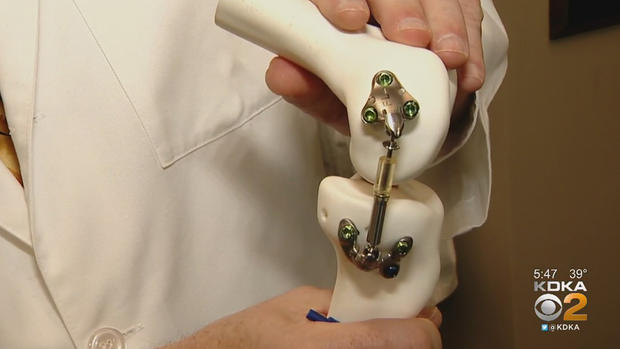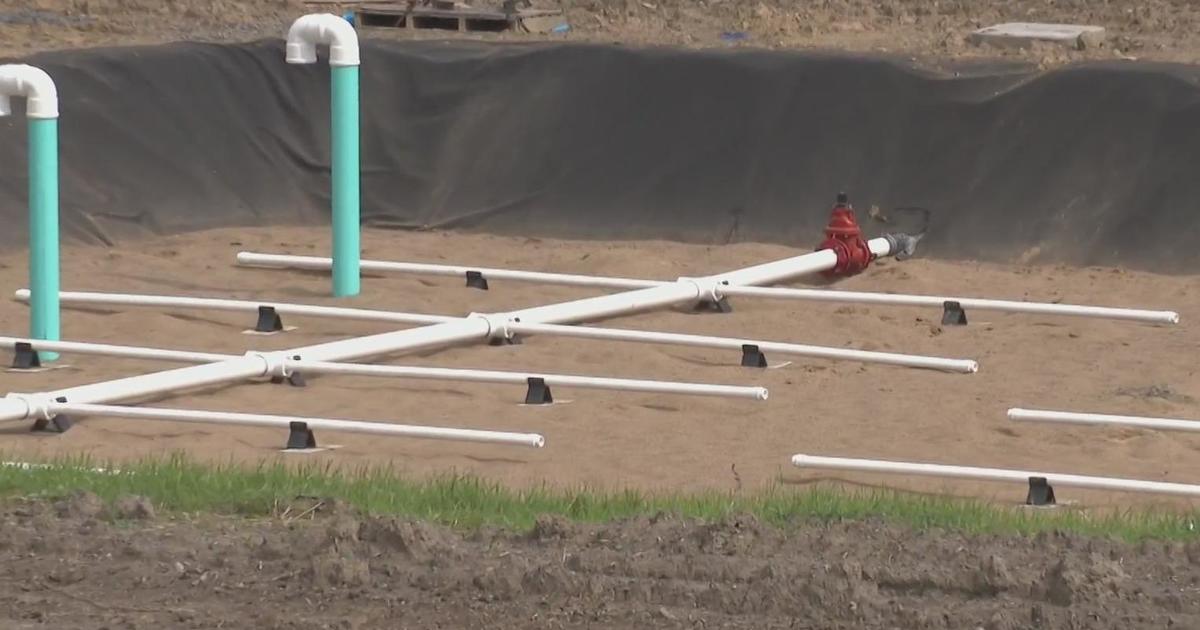New Knee Device Helping Patients With Intermediate Osteoarthritis
Follow KDKA-TV: Facebook | Twitter
PITTSBURGH (KDKA) -- For firefighter Chuck Stenger, the past 20 years have been full of pain.
He remembers when it first started.
"Knelt down to start treating a patient, and it felt like a nail going through my knee," he said.
Crawling and climbing ladders took its toll.
"It just tore it up, tore it up, tore it up. And I was just thinking, eh, just part of getting old," Stenger said.
A normal knee looks like a smooth, white cueball, but Stenger had osteoarthritis, a wear-and-tear kind of arthritis, where it looks more like potholed asphalt. He tried steroid injections, but the pain relief only lasted a couple weeks.
"It's been constant for probably the last five years," said Stenger.
Then, an ad popped up on Facebook.
"So I clicked on it," he said. "It says if you are having pain on the medial side of your knee, and you've been diagnosed with osteoarthritis, fill out the survey."
He pinpointed his pain to the inner part of his knee, pain that interfered with steps, ladders and walking long distances. The next day, he got a call from California.
"'Well, we're the manufacturer, and we're running a clinical trial, would you be interested in having this done?' Sure. Why not?" Stenger said.
The company referred him to doctors at the Ohio State University Wexner Medical Center. They considered him a good candidate for the study looking at whether a new device, implanted onto the knee joint, will relieve the pain and delay a knee replacement.
Stenger's surgery was a week later. He was the first person in the United States to have this done.
"I was anxious. I wanted to get it done. Get it over with," he said.
For mild osteoarthritis, ice, anti-inflammatory medicine and physical therapy help quite a bit. For severe cases, doctors go straight to knee replacement.
But for in-between cases like Stenger's, there haven't been many options. For that reason, developers came up with this device and this study.
"If we can buy patients some time before they ultimately have a knee replacement 'til later in life, there's a real need for that," said Ohio State University orthopedist Dr. Christopher Kaeding while demonstrating on a knee model. "The Calypso is designed to help give some relief to patients who have arthritis in the medial compartment, which also happens to be the most common compartment to get arthritis. It has a little plate that's attached to the end of the thigh bone, another plate that's attached to the shin bone. It decreases the force load that's transmitted across that component of the knee. What's nice, is afterwards, patients are on crutches initially, but as they feel comfortable, they can start to put more and more weight on it."
Aside from a five-inch scar, you can hardly tell there's a device on the inner side of Stenger's knee joint.
Who is the ideal candidate?
"They're not too heavy; hopefully, they're not smokers, hopefully they're not diabetic, and they're middle-aged. So a little young to have a total knee done," Dr. Kaeding said.
If the whole knee hurts, this isn't for you. Also, it comes with potential risks like infection and blood clots to name a few.
"Can it loosen? Sure. That's true of any plate, screw or implant," Dr. Kaeding said.
In the study, the doctors are comparing patients who get the device to those who get standard care, tracking discomfort and activity level, and noting any patient characteristics that could predict a longer benefit.
"I've had several say right away, they could tell as soon as the incision was healed, they could tell right away when they walked that they were having less discomfort. This surgery and this implant is much less traumatic than a total knee replacement," Dr. Kaeding said. "Hopefully, they get relief for many many years. So we can then delay or maybe even eliminate the need for knee replacement."
Six weeks post-op, Stenger is doing physical therapy, and aside from the knee sometimes not bending as much as the other side, he can't tell he has a device.
"I'm doing things I haven't been able to do for 15 to 20 years," he said.




